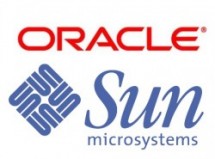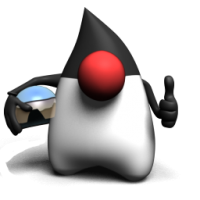 Today at the “Bay Area JUG Roundup 2010” at Oracle’s office in Redwood City, I got my first glimpse into what the future of Java may be under Oracle. It was a fun event and a good sign that Oracle is heading in the right direction with its approach to Java.
Today at the “Bay Area JUG Roundup 2010” at Oracle’s office in Redwood City, I got my first glimpse into what the future of Java may be under Oracle. It was a fun event and a good sign that Oracle is heading in the right direction with its approach to Java.
Before even attending the conference, I already felt Sun Microsystems was a good buy for Oracle in 2009. I’m not sure why IBM let the opportunity to snatch Sun slip away, but I’m sure they have regretted it. Oracle scooped up Sun for $7.38 billion or about $9.50 a share. IBM reportedly raised its offer to $9.50 a share before the deal collapsed. From sources I’ve talked to and reports I’ve read, I think IBM just took too long to get there and Oracle came in and offered a deal that was more tempting and seemed less problematic. Now Sun’s arsenal will only power Oracle to compete on a broader level against IBM and other IT giants such as Hewlett-Packard. In actuality, Sun is much more beneficial to Oracle than it would have been to IBM anyway. Sun brings much hardware and software that Oracle can leverage. IBM would most likely have only leveraged the software side of Sun’s business and sold off or stripped away the hardware assets.
In any case, I think Oracle is doing the right thing by putting their support behind events such as the “Bay Area JUG Roundup 2010.” Oracle CEO, Larry Ellison, has described Java as “the single most important software asset we have ever acquired.” And Java has long been decomposing with its mismanagement by Sun.  Now with some fresh money and a thriving company behind it, Java may once again have a bright future ahead of it as it once did in the distant past. However, much of this will depend on the developer community behind it, and Oracle seems to have realized this early on. I have noticed an uptake in marketing, newsletters, and “buzz” around Java since Oracle took the reins.
Now with some fresh money and a thriving company behind it, Java may once again have a bright future ahead of it as it once did in the distant past. However, much of this will depend on the developer community behind it, and Oracle seems to have realized this early on. I have noticed an uptake in marketing, newsletters, and “buzz” around Java since Oracle took the reins.
The event tonight was a good way for Oracle to show their passion for keeping things “alive” in the developer community and to communicate their agenda. I can definitely see that the passion and intent is there, but, as far as the agenda and outcome, I guess only time will tell.
One interesting thing that was mentioned today was that the TIOBE Index shows that as of April 2010 “C” has overtaken Java for the #1 programming language spot. The following explanation is stated on the TIOBE site:
After more than 4 years C is back at position number 1 in the TIOBE index. The scores for C have been pretty constant through the years, varying between the 15% and 20% market share for almost 10 years. So the main reason for C’s number 1 position is not C’s uprise, but the decline of its competitor Java. Java has a long-term downward trend. It is losing ground to other languages running on the JVM. An example of such a language is JavaFX script that is now approaching the top 20.
This only provides more reason for Oracle to really get to work in keeping Java ahead of the game. With competitors on their heels and the downward trend of Java, they have their work cut out for them, even though, in my opinion , Java is still a great and highly advantageous technology.
Further, some individuals tonight raised concerns about Java’s future since the father of Java, James Gosling, decided to resign from Oracle last month, only a few months after the acquisition of Sun. On his blog Gosling stated the following:
“As to why I left, it’s difficult to answer: Just about anything I could say that would be accurate and honest would do more harm than good.”
I think the departure of Gosling is, of course, a blow to Oracle but not one they are incapable of handling. Oracle has a lot of work to do, but they they also have a lot of opportunities; they have the hardware, software, great foothold in the enterprise industry, and now a cult Java following. It will be interesting to see how things play out.



 Twitter
Twitter LinkedIn
LinkedIn Youtube
Youtube RSS
RSS